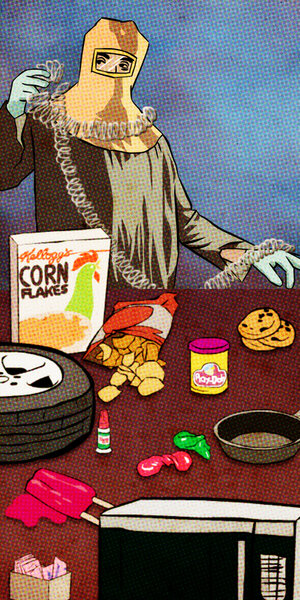The invention of the actual ice cream cone, or “cornet,” still remains a controversial mystery. But what is widely accepted is the cone-shaped edible ice cream holder was indeed an accident.
In the late 1800s and early 1900s, ice cream prices dropped and the creamy dessert quickly became a more popular treat. Ice cream street vendors popped up across the US and in Europe. The competition was over more than just flavors, it came down to what they put the ice cream in.
Paper, glass, and metal were common materials used for holding ice cream. Then came the not-so-sanitary “penny licks.” Many vendors would scoop their flavor of the day into a glass and hungry buyers would pay a penny to lick the glass clean before returning it to the vender. Not only was this not the cleanest way to eat dessert, but also customers kept breaking the glass or “accidentally” walking away with them.
In 1902, Antonio Valvona filed the first patent in Britain for an edible ice cream cup. The second came from Italo Marchiony, an Italian immigrant living in New York. However, these patents covered bowl, not cones.
So where did the cone-shaped ice cream holder come from? Historians agree on the “where” and “when,” but not the “who.”
The 1904 World’s Fair in St. Louis celebrated the centennial of the Louisiana Purchase (though one year late). The food was plentiful, and historians say there were more than 50 ice cream venders and over a dozen waffle stands. With the heat, ice cream was the top seller – hot waffles not so much.
But the waffles proved useful when all the ice cream venders ran out of cups.
The generally accepted story goes likes this: ice cream vender Arnold Fornachou couldn’t keep up with demand and ran out of paper dishes. Ernest Hamwi, a vender next to Mr. Fornachou sold “zalabia,” a waffle-like pastry. Because his zalabia wasn’t selling, Mr. Hamwi decided to help his neighbor by rolling up one of his waffle pastries and giving it to Fornachou who put ice cream in it. Viola, the first ice cream cone sold.
Other venders teamed up as well, each claiming that it invented the idea. With all the hustle and bustle of the World’s Fair, no one really knows who invented the cone first. Many patents were filed after the fair for “waffle-rolling” machines, but many still take the credit for this accidental invention.





